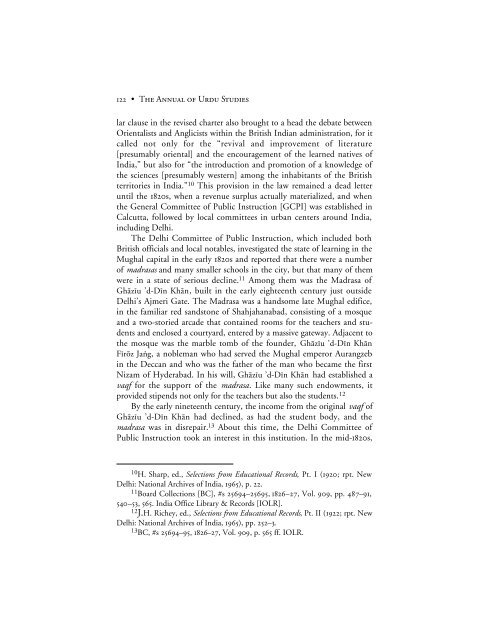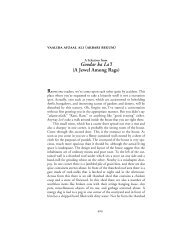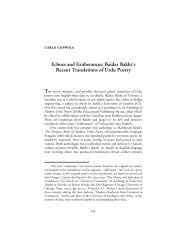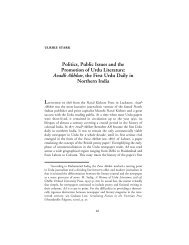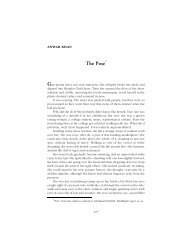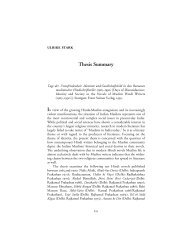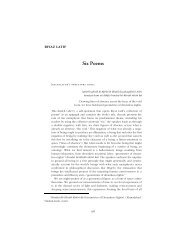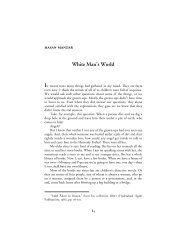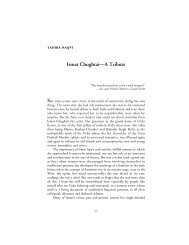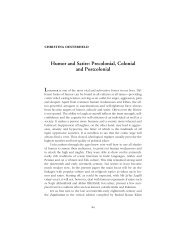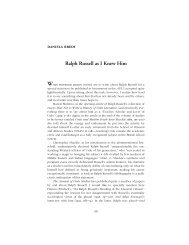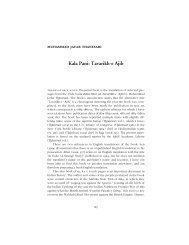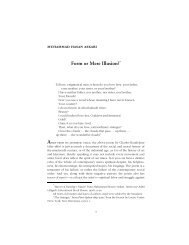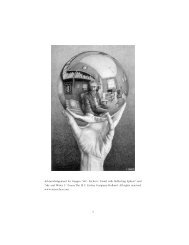Delhi College and Urdu* - MINDS@UW Home
Delhi College and Urdu* - MINDS@UW Home
Delhi College and Urdu* - MINDS@UW Home
You also want an ePaper? Increase the reach of your titles
YUMPU automatically turns print PDFs into web optimized ePapers that Google loves.
122 • THE ANNUAL OF URDU STUDIESlar clause in the revised charter also brought to a head the debate betweenOrientalists <strong>and</strong> Anglicists within the British Indian administration, for itcalled not only for the “revival <strong>and</strong> improvement of literature[presumably oriental] <strong>and</strong> the encouragement of the learned natives ofIndia,” but also for “the introduction <strong>and</strong> promotion of a knowledge ofthe sciences [presumably western] among the inhabitants of the Britishterritories in India.” 10 This provision in the law remained a dead letteruntil the 1820s, when a revenue surplus actually materialized, <strong>and</strong> whenthe General Committee of Public Instruction [GCPI] was established inCalcutta, followed by local committees in urban centers around India,including <strong>Delhi</strong>.The <strong>Delhi</strong> Committee of Public Instruction, which included bothBritish officials <strong>and</strong> local notables, investigated the state of learning in theMughal capital in the early 1820s <strong>and</strong> reported that there were a numberof madrasas <strong>and</strong> many smaller schools in the city, but that many of themwere in a state of serious decline. 11 Among them was the Madrasa ofGh≥zµu ’d-Dµn Kh≥n, built in the early eighteenth century just outside<strong>Delhi</strong>’s Ajmeri Gate. The Madrasa was a h<strong>and</strong>some late Mughal edifice,in the familiar red s<strong>and</strong>stone of Shahjahanabad, consisting of a mosque<strong>and</strong> a two-storied arcade that contained rooms for the teachers <strong>and</strong> students<strong>and</strong> enclosed a courtyard, entered by a massive gateway. Adjacent tothe mosque was the marble tomb of the founder, Gh≥zµu ’d-Dµn Kh≥nFµråz Jag, a nobleman who had served the Mughal emperor Aurangzebin the Deccan <strong>and</strong> who was the father of the man who became the firstNizam of Hyderabad. In his will, Gh≥zµu ’d-Dµn Kh≥n had established avaqf for the support of the madrasa. Like many such endowments, itprovided stipends not only for the teachers but also the students. 12By the early nineteenth century, the income from the original vaqf ofGh≥zµu ’d-Dµn Kh≥n had declined, as had the student body, <strong>and</strong> themadrasa was in disrepair. 13 About this time, the <strong>Delhi</strong> Committee ofPublic Instruction took an interest in this institution. In the mid-1820s,10 H. Sharp, ed., Selections from Educational Records, Pt. I (1920; rpt. New<strong>Delhi</strong>: National Archives of India, 1965), p. 22.11 Board Collections [BC], #s 25694–25695, 1826–27, Vol. 909, pp. 487–91,540–53, 565. India Office Library & Records [IOLR].12 J.H. Richey, ed., Selections from Educational Records, Pt. II (1922; rpt. New<strong>Delhi</strong>: National Archives of India, 1965), pp. 252–3.13 BC, #s 25694–95, 1826–27, Vol. 909, p. 565 ff. IOLR.


